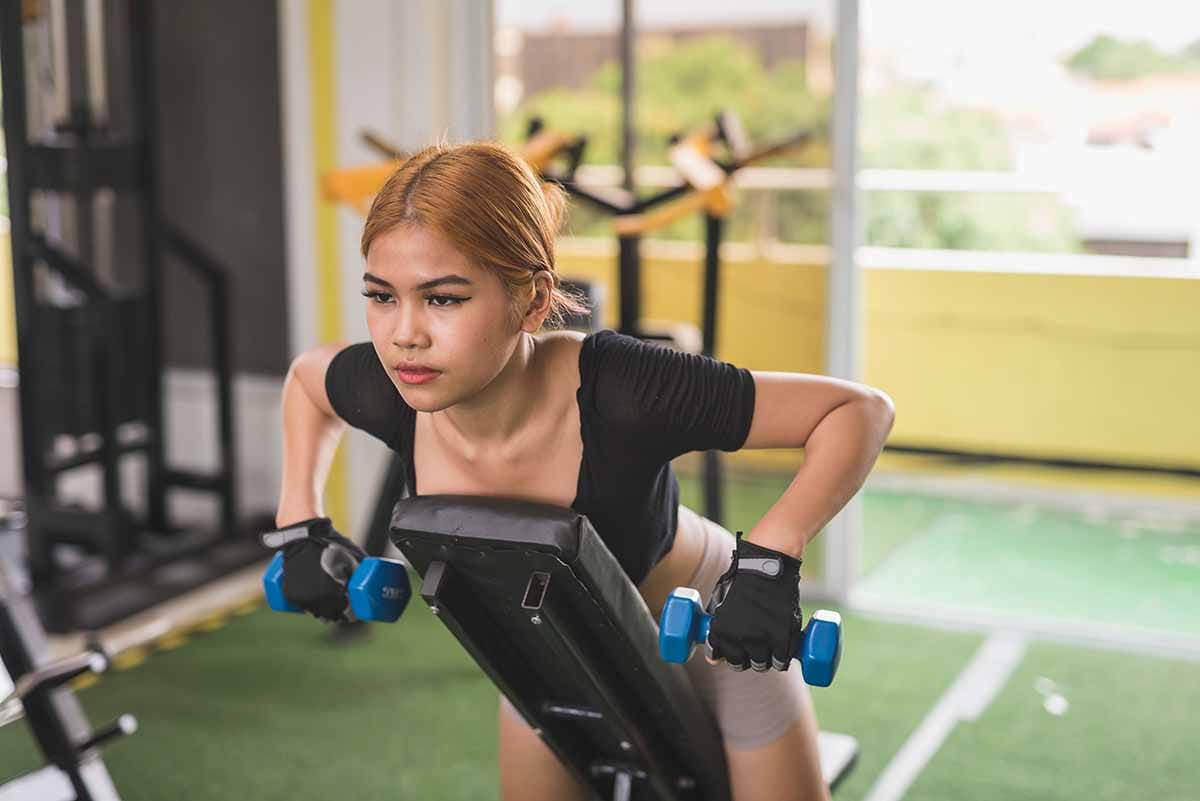Master Chest Supported Dumbbell Rows for a Stronger Back
How to do chest supported dumbbell rows? Tips and tricks to do this exercise the best way. Learn how to strengthen your back...
If you’re looking for ways to build up your back muscles, you’ve likely explored all types and variations of rows.
Typically, these have you relying on dumbbells or a barbell while holding your weight up as you stand.
But have you considered what other types of equipment could help you perfect your rows for a stronger back?
In this article, we’ll explore the chest-supported dumbbell row, what muscles are involved in this exercise and what benefits it has for your fitness goals. So, without further ado, let’s start.
What is a Chest Supported Dumbbell Row?
Also called an incline dumbbell row, this move is the cheat code for stronger back muscles without the back pain. Adding the support of a weight bench can make this dumbbell row variation a good way to reduce pain and increase stability as you row to better isolate your back.
If you struggle with back pain in other exercises that work the back (for instance, lower back pain when squatting), weight bench support can help.
By working on this simple dumbbell exercise using the help of a weight bench, you can help alleviate any stress on your back muscles.
Want to get the full scoop on building a strong and pain-free back? For more information, these resources can help:
- Mid Back Exercises
- Cable Back Workouts
- Back Isolation Exercises
Next, let’s see what goes on in your body when you perform chest supported dumbbell rows.
What Muscles Does the Chest-Supported Dumbbell Row Work?
Before we break down how to do the perfect chest supported dumbbell row for a stronger back, let’s take a look at which muscles are hard at work to help you perform this move.
Latissimus Dorsi
Your latissimus dorsi, also called the “lats” are the large muscles that extend all the way across your back, wrapping around your side ribs.
These are the main drivers of most pulling moves that your body makes. We tend to think of pulling as being an arm movement, but when it comes to doing a pull-up or bringing your body up to a standing position from seated.
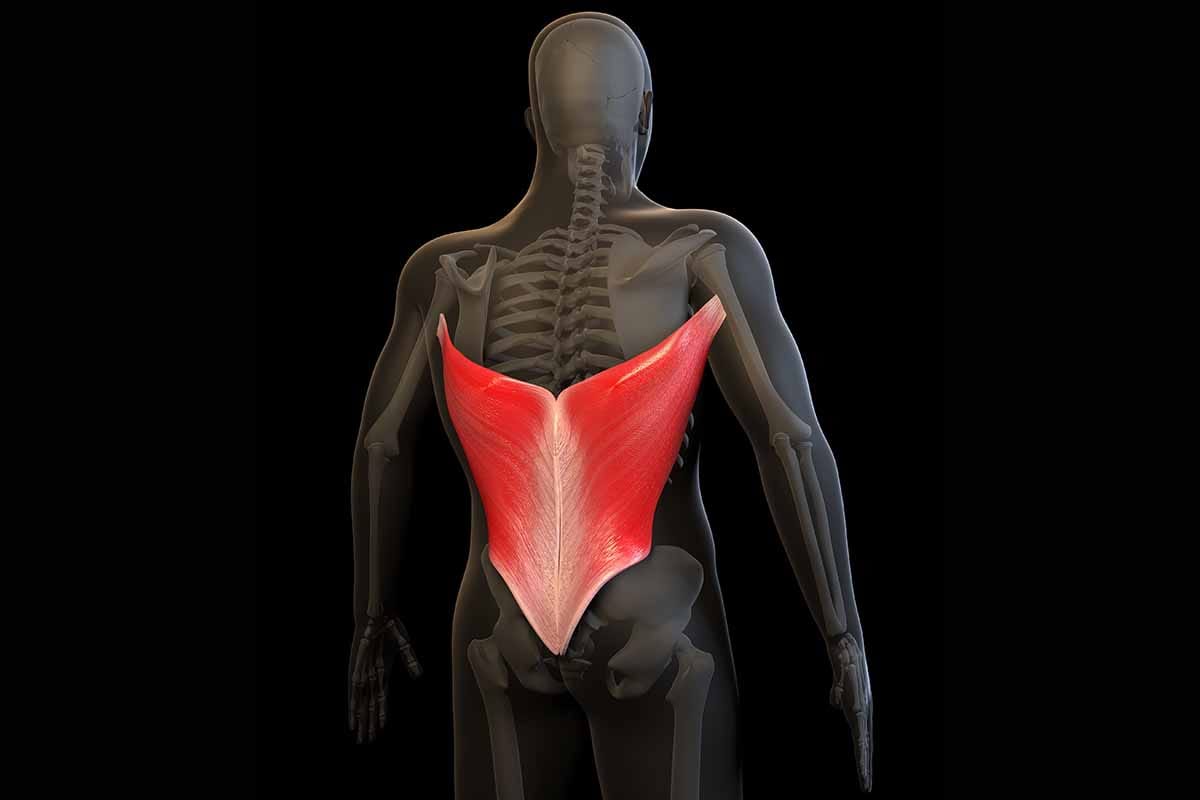
Trapezius
The trapezius muscles, also known as your “traps” are the large muscles that attach from just under your skull to down the mid-back and across the tops of your shoulders.
Traps are postural muscles that help you stand upright. They also help you to move your shoulder blades (scapulae) up and down. Think about the muscles you feel when you make a shrugging motion.
That’s primarily the action that comes from your traps. Since they also span along your neck, your trapezius muscles play a key role in neck mobility too.

Biceps
Although chest-supported dumbbell rows are typically considered a move to work your back, your biceps brachii (usually just called “biceps”) are one of the main movers behind the rowing action.
These inner upper arm muscles let you flex your elbows, moving the forearm towards the upper arm across the elbow joint. When you pull your weight up and back into your rows, your biceps are what allow you to get that bend in your elbows.
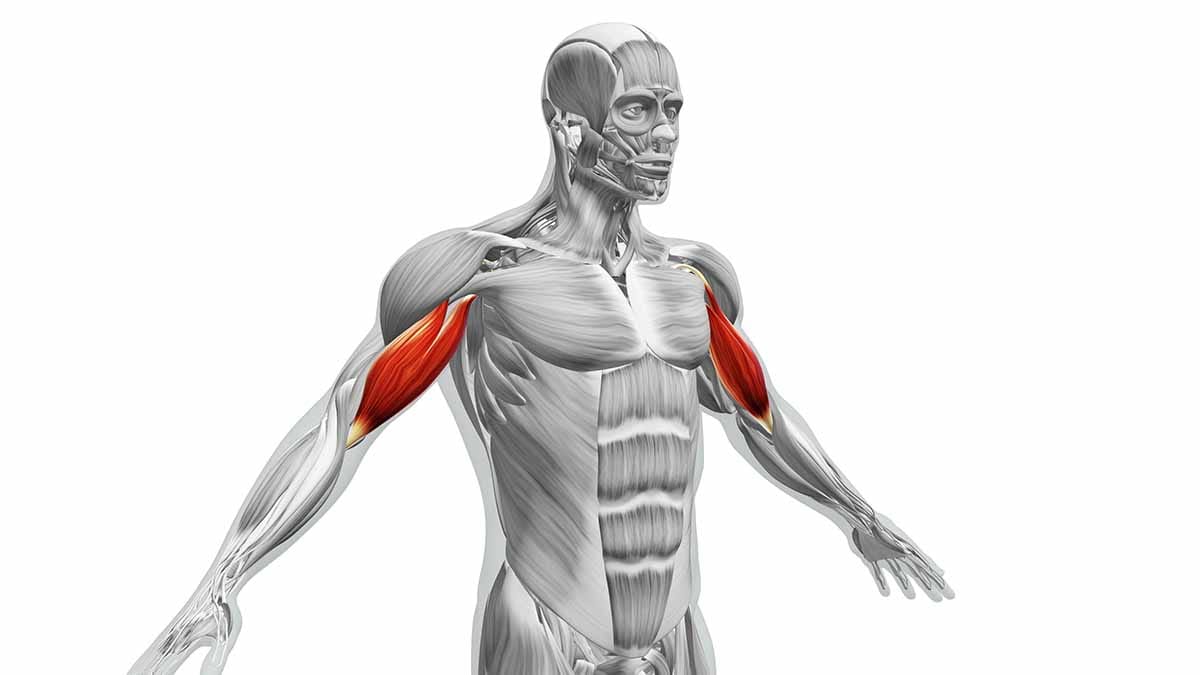
Rhomboids
You have two rhomboid muscles: rhomboid major and rhomboid minor. These muscles help anchor your scapula (shoulder blade) to your rib cage. They also help you to retract your scapula, in other words: to pull your shoulder blades together.
As you squeeze your shoulder blades in at the top of a row, your rhomboids are there to help you out.
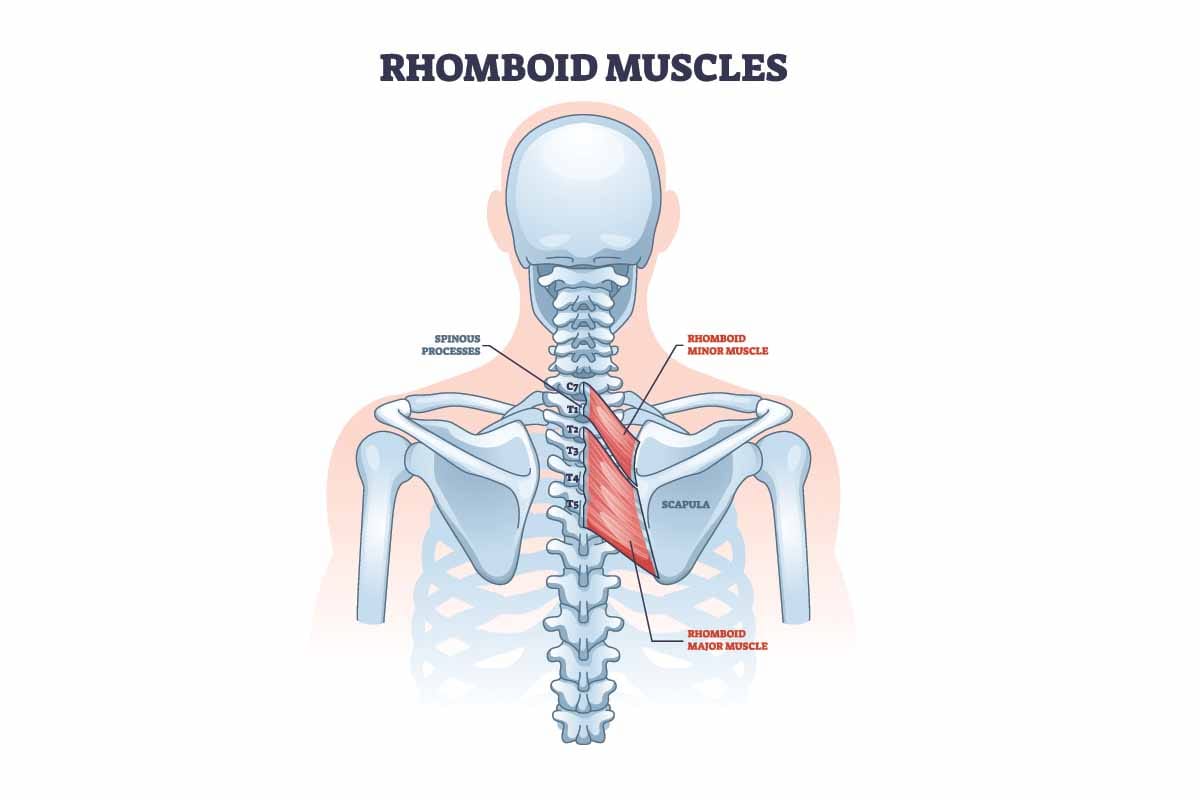
How to Do a Chest-Supported Dumbbell Row
Video: Chest supported dumbbell row.
Chest supported dumbbell rows, aka, incline rows, can make an excellent addition to your pull day workout. Here are the steps for a chest supported dumbbell row.
- Set-Up: Set an incline bench to a 30-45 degree angle. Grab a pair of medium-weight dumbbells.
- Body Position: Lie face down on your incline bench, keeping your chest and stomach supported. Holding a dumbbell in each hand with a neutral grip (palms facing each other), let your arms hang straight down by the sides of the bench.
- Action: Engaging your back muscles, pull the dumbbells up towards your ribcage. Squeeze your shoulder blades together at the top of this move. Keep your elbows close to your body and focus on using your back muscles rather than your arms.
- Reverse: Slowly lower the dumbbells back to your starting position. Control your movement, keeping tension in your back muscles the whole time.
- Reps: 3-4 sets of 10-12 reps.
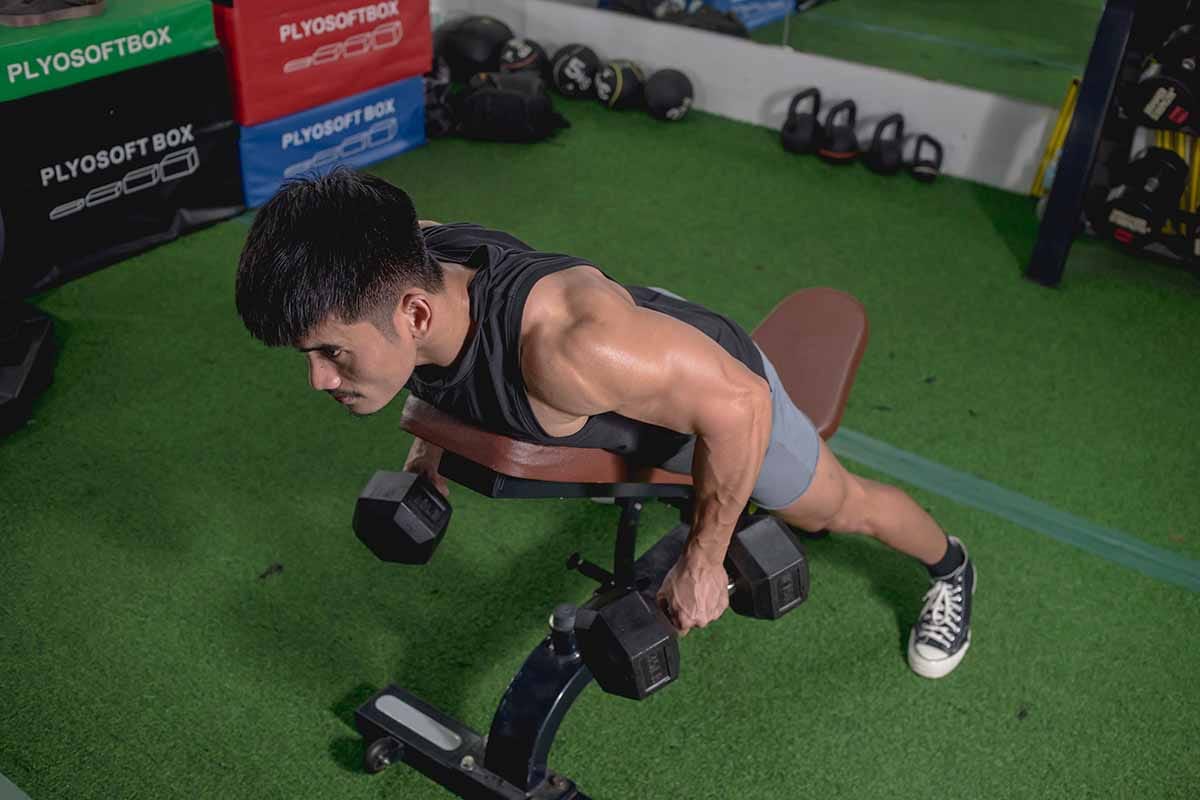
This exercise effectively hits your middle and upper back muscles, working through the muscles mentioned above— rhomboids, traps, biceps, lats and rear deltoids, while you get less involvement from your lower back. This makes it a safer alternative if you’ve got lower back issues.
After you work your back with chest-supported dumbbell rows, make sure to rest and refuel. Post-workout, you should:
- Eat a protein-rich meal or snack
- Stretch the muscles of your back and shoulders
- Incorporate cardio workouts into your routine along with your strength training
- Take at least one full rest day per week.
Benefits of Chest-Supported Dumbbell Rows
Obviously you’re hoping to grow your back because you want it to feel strong. You may also want to add back exercises to your aesthetic workout plan to help you look good. Back muscles can also help create the V taper shape or Greek God physique that many men seek out as a key fitness goal.
But chest-supported dumbbell rows can have other plusses that impact your back health and safety.
Take a look at a few key benefits of chest-supported dumbbell rows.
1.Less Lower Back Strain
By lying on an incline bench, you support your lower back. This helps reduce the risk of strain and injury. This is particularly beneficial for people with lower back issues or those recovering from back injuries.
2. Isolates the Back Muscles
This exercise focuses on your middle and upper back muscles like your rhomboids, traps, and rear deltoids. Supporting your chest helps minimize the involvement of your lower back or any compensation from your legs.
If you’re working with proper technique, the bench allows for better isolation and engagement of the muscles you want to target.
3. Better Posture
Strengthening your upper back muscles can help you prevent forward shoulder rolls or sloped shoulders. These often come from sitting for too long or other habits that create poor posture over time.
The role of the posture is not only important for back health, but it can give you improved confidence too! That means more self-belief could benefit you, whether you’re working out at the gym, focusing on your job or improving interpersonal relationships.
4. Balanced Muscle Development
Isolating your back muscles with chest-supported dumbbell rows can help you get balanced development between the back and front halves of your body.
Back muscles make up part of what is called your posterior chain— referring to all the muscles of your back. This chain covers everything from the back of your head down to your lower legs.
Posterior chain resistance training lets the muscles on the back of your body help you sit, stand, run, jump and more. A healthy posterior chain is crucial to many daily functions that you perform unconsciously. Training these muscles prevents muscle imbalances that can leave the front and back sides of your body feeling off-kilter and put you at increased risk of injury.
5. More Muscle Activation
Do you tend to “cheat” and use momentum to hoist your weights up? Chest support for your rows helps eliminate momentum and cheating, which gives you better muscle activation and contractions. This way, you’ll get more effective workouts and better muscle development over time.
6. Versatility
You can do this workout with different grip positions (neutral, pronated, supinated) to target different parts of your back. Furthermore, chest-supported dumbbell rows can be easily modified for different fitness levels. You can switch your bench incline or dumbbell weight to make this move easier or harder.
Incorporating chest-supported dumbbell rows into your workout routine can help build a stronger, more defined back. You also minimize your injury risk and promote better posture and overall muscular balance.
Tips and Tricks for Chest-Supported Dumbbell Rows
While you work on your chest supported dumbbell rows, there are a few simple hacks that may make this exercise easier for you. Take a look at these tips and tricks to help you row more easily for stronger back muscles.
Bench Angle
Tip: Use a 30-45-degree angle when you set up your bench. This gives you an optimal range of motion for effective muscle engagement.
Why? In this article, we broke down the perfect angle for your incline bench and why it works: Best Incline Bench Angle.
Experiment with different bench angles to find the position that allows you to feel the strongest contraction in your back muscles.
Grip Type
Tip: Use a neutral grip (palms facing each other) to reduce the stress on your shoulders and let your mid back engage more.
Occasionally switch to a pronated (palms facing down) or supinated (palms facing up) grip. This lets you target different parts of your back. It’s a good way to add variety to your routine.
Big Picture
We hope you’ve gotten the low down on how to row for your strongest back yet!
Chest-supported dumbbell rows are the perfect move to add to your arsenal to focus on developing your back.
This simple exercise can help you reduce back pain and keep your stability while you work on your rows. The support of a weight bench may make it easier for you to isolate your arm movements, focusing on squeezing your shoulder blades to target the back.
Practicing this move a few times a week should help you build a bigger back in no time.
BACK your workouts with proven metrics. The Flex App progresses as you do with plate tracking capabilities and auto progression. Try it out for free today.
Related articles


Get fit with Flex
Build muscle & lose weight fast for free.
Available on iPhone + Apple Watch
